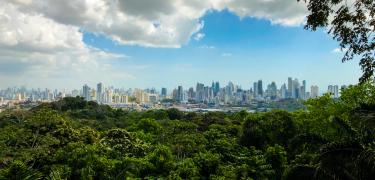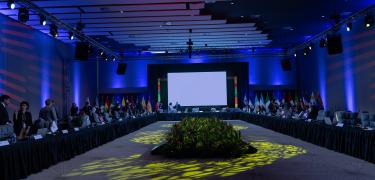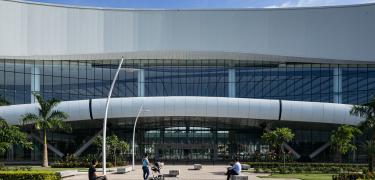Ngäbe-Buglé Indigenous People
In the mountains of western Panamá, across 2,500 square miles (6,475 kilometers), live the largest indigenous comarca (or region) in Panamá—the Ngäbe-Buglé people. The comarca was formed in 1997 to provide these indigenous people autonomy of land previously belonging to the Bocas del Toro, Chiriquí, and Veraguas provinces.
Experience the vibrant culture of Panamá firsthand by meeting our indigenous people and seeing their way of life up close.
The Ngäbe-Buglé people play a vital role in Panamá’s culture—from coffee production and farming to artisan goods and the safekeeping of ancient spiritual rituals and nature. Join one of the many tours offered by the community and see the native culture and traditions of the Ngäbe-Buglé people.

Rituals & Traditions
Spirituality is sacred to the Ngäbe way of life, which you can experience when visiting a waterfall in the Ngäbe-Buglé lands. The Ngäbe see waterfalls as holding the link between them and their ancestors. The Kiki is one of the most breathtaking waterfalls in Panamá and is just one of the many waterfalls in the comarca. It has a free fall of approximately 113 meters (371 feet), making it the tallest free fall waterfall. Plus, you can walk behind it for a unique experience as you follow a local Ngäbe guide while on a waterfall tour.
One of the waterfall rituals is called the Grö and serves as a rite of passage for the Ngäbe boys. In four days and four nights, the Ngäbe boys must embark on a journey that tests their survival abilities and results in spiritual enlightenment. While partaking in the ritual, they encounter a waterfall spirit called the Bube, one of the many spirits passed down from generation to generation.
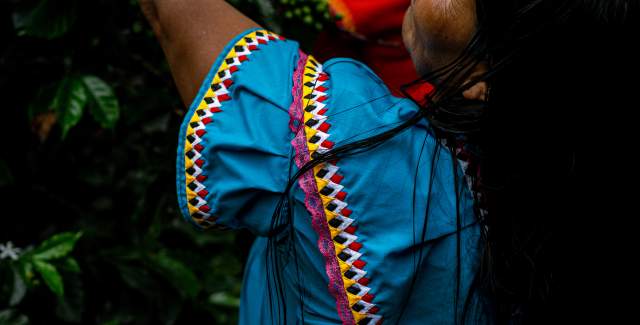
Just like waterfalls, cacao plays a vital role in their spirituality. Cacao is often used during tribal celebrations and ceremonies and in medicines. The cacao seed is an important part of Ngäbe culture, as they know its benefits are essential for health and self-love. Visitors can join a cacao ritual, known as the ajuito, in the community of Soloy. The ritual occurs when Ngäbe elders accompany a sick person, sharing stories, wisdom, traditions and giving support.
The Ngäbe people within the Bocas del Toro section of the comarca, produce super high quality organic cacao that is exported to Europe and Southern Africa. A local Ngäbe guide will take you on a hike or horseback riding, through the jungle and cacao trees teaching you everything from growing organic cacao to making it into pure chocolate.
Chocolate is not the only tasty treat you can find in this community. Since its early days, Panamá’s coffee industry has depended on the skilled hands of the Ngäbe-Buglé, who for decades have worked in our coffee farms predominantly in the highlands of Chiriquí. From them, Panamá has learned efficient harvesting techniques that ensure the correct selection of the mature cherry. This truly makes a difference in that unique taste of Panamanian coffee.
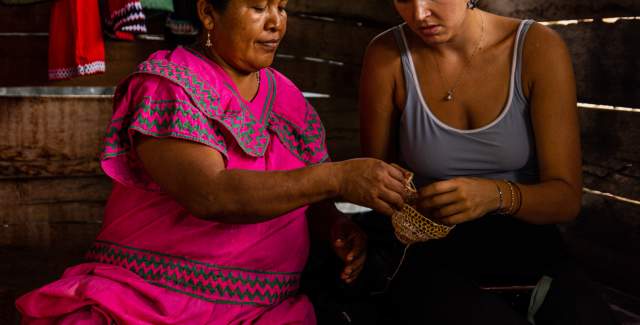
Immerse Yourself in the Culture
Besides chasing waterfalls, scenic views and witnessing traditional rituals firsthand, there are even more ways to take part in the Ngäbe-Buglé culture.
While visiting Soloy in the comarca within the Chiriquí Province, experience the Ngäbe-Buglé way of life through traditional dances, handicraft lessons, and chácara-making (messenger-style bags made of natural fibers from fruits and plants).

The Ngäbe-Buglé formed their own artisan group to sell their arts and crafts, which you can purchase throughout the comarca. These handmade goods include hats, traditional necklaces known as chakiras, and naguas, a traditional Ngäbe dress with bright colors.
Explore their delightful and fresh, local gastronomy. The Ngäbe-Buglé gastronomy revolves mainly around vegetables they grow or gather from the forest. They eat meat from animals like venison, painted rabbits, and peccary fish and birds—locally caught or farm-raised. They serve their food in a vessel or totuma made of pumpkins of various sizes. The spoons they use are made of the same orange squash and are used to serve and eat the food. Their drinks have a variety of bases, including corn, cane, cacao, cassava, pixbae, ripe banana, pineapple, and other fruits, also served in totumas.
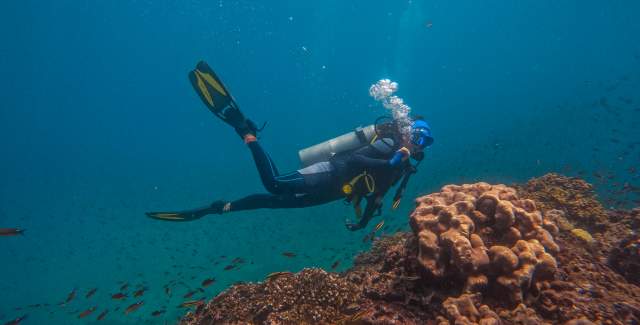
Getting There
From David City in the Chiriquí Province, you can reach two sections of the comarca—a two-hour car ride leads you to the Chiriquí community of the Ngäbe-Buglé people, and a four-hour journey through the jungle of the Bocas del Toro Province where several communities offer a variety of touristic experiences.

